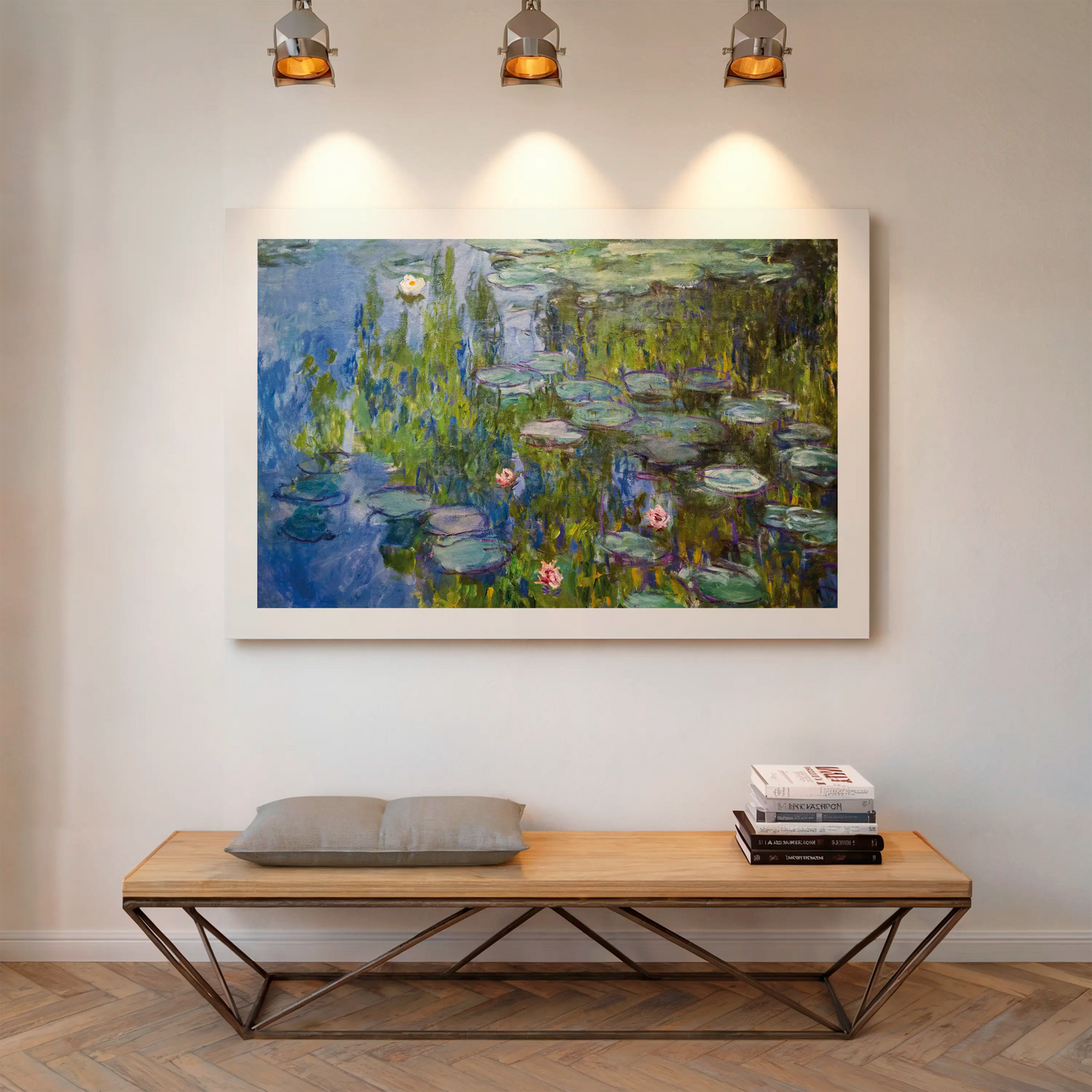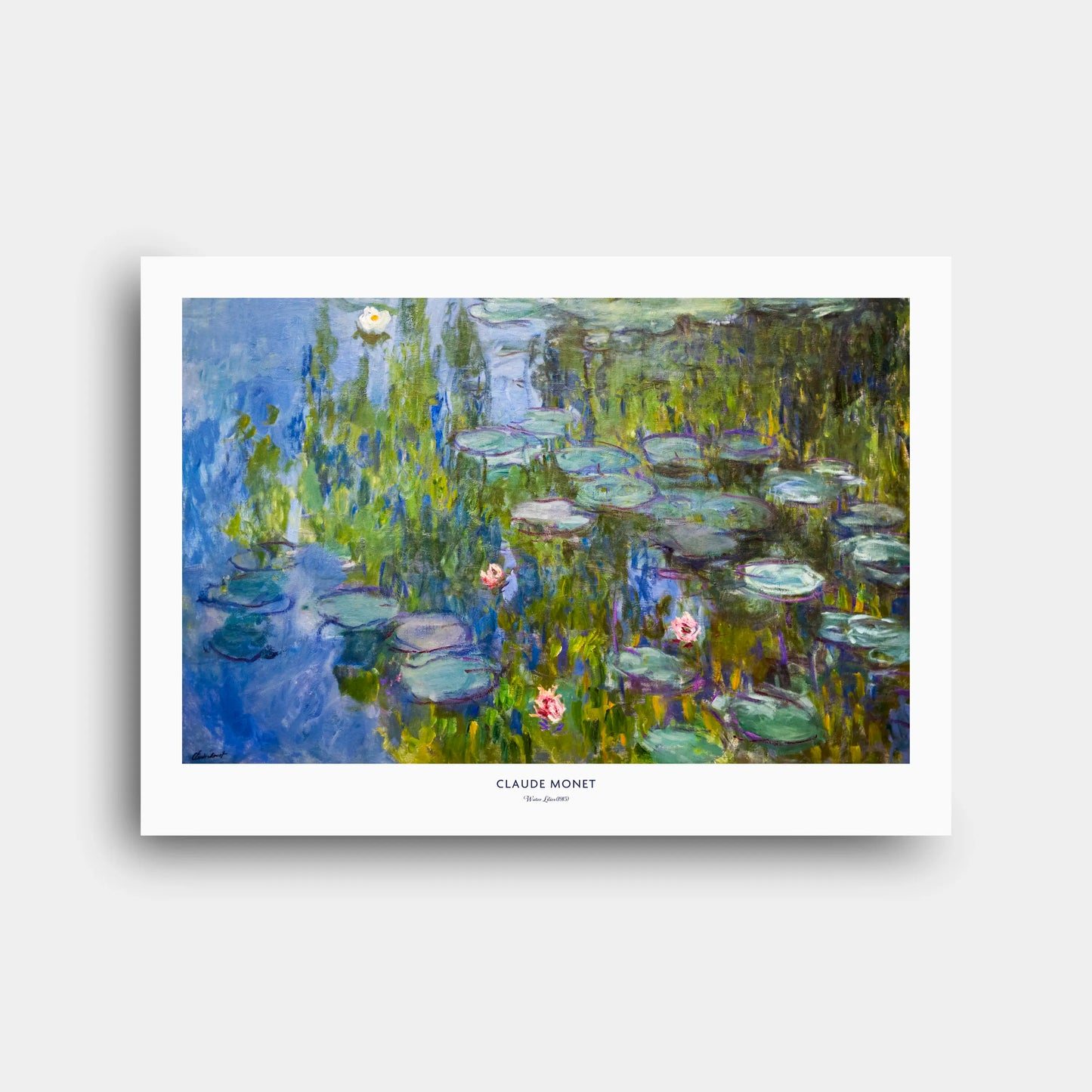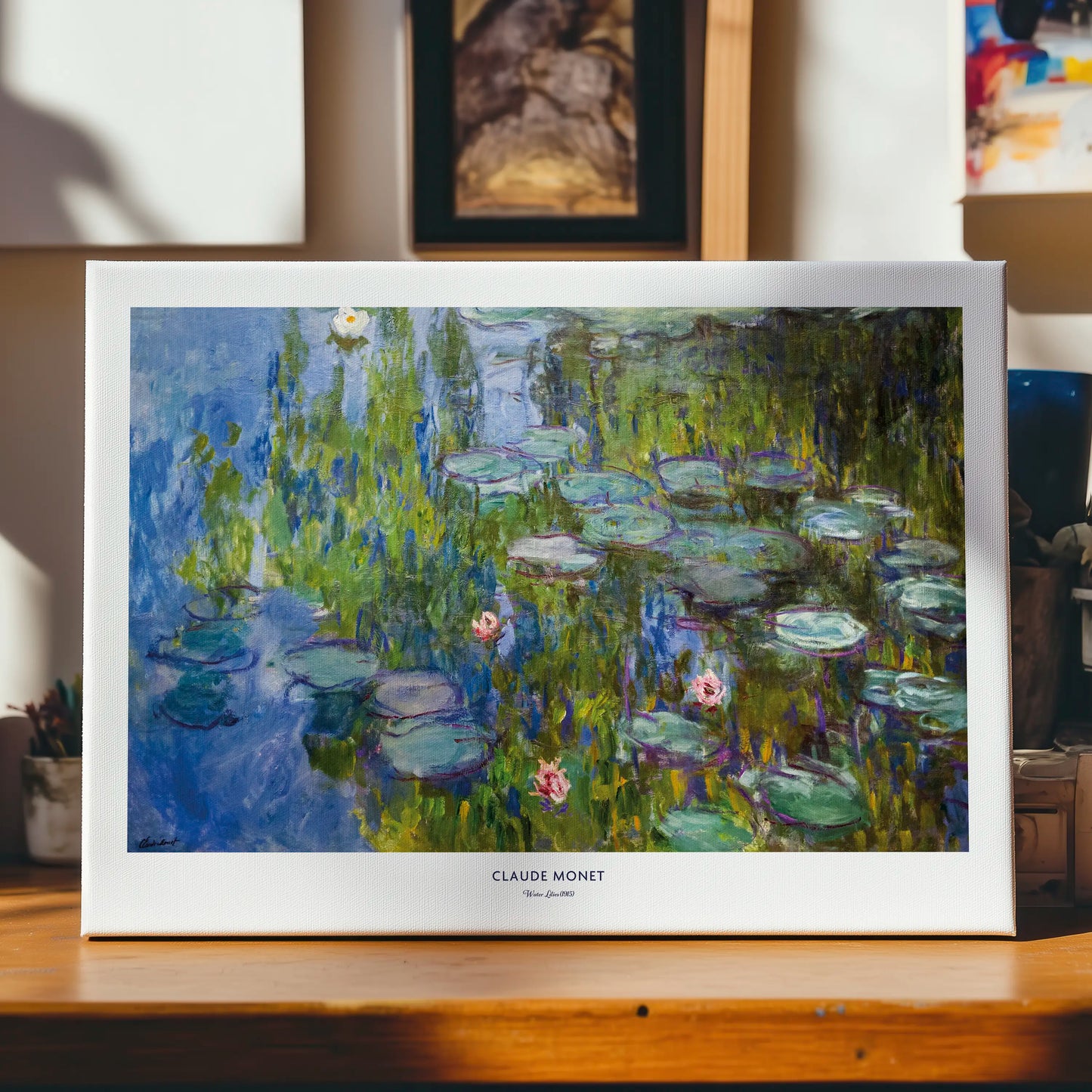Claude Monet - Water Lilies (1915) - Canvas Print N159
Claude Monet - Water Lilies (1915) - Canvas Print N159
Couldn't load pickup availability
Share
Paper Poster | Canvas Print | Digital File
1. Historical and Artistic Context
Claude Monet’s “Water Lilies” (1915) belongs to the later period of his career, when he focused almost exclusively on his garden at Giverny. By this time, the artist had already created dozens of variations of the motif, transforming his carefully cultivated pond into an endless source of inspiration. Painted during the turbulence of World War I, this artwork can be seen as Monet’s personal retreat into peace and beauty, while France was experiencing devastation. At the same time, Monet struggled with personal hardships, including the loss of loved ones and the growing challenge of cataracts, which affected his vision. Despite these difficulties, the pond became for him not just a subject but a world of its own, where the boundaries of time and space seemed to dissolve.
2. Technical and Stylistic Analysis
The canvas is distinguished by its complete absence of horizon or perspective anchors, which immerses the viewer directly onto the surface of the water. The interplay of floating lily pads, delicate flowers, and reflections of surrounding trees creates a layered composition that constantly shifts between reality and illusion. Monet employed loose, fluid brushstrokes that merge colors rather than separate them, creating a continuous vibration across the canvas. Shades of blue and violet dominate, balanced with greens and punctuated by soft pink and white blossoms. This stylistic dissolution of form anticipates modern abstraction, while still preserving the atmosphere of natural beauty and tranquility.
3. Symbolism and Interpretation
Although Monet avoided explicit allegory, the water lilies have been interpreted as symbols of peace, meditation, and the cyclical renewal of life. The absence of sky and earth transforms the pond into a self-contained universe, suggesting eternity and boundlessness. The blossoms scattered across the canvas resemble moments of clarity or sparks of hope amid the fluid uncertainty of reflections. Many scholars have also seen the work as a reflection of resilience—an artist creating serenity in the face of war and personal decline. The influence of Japanese aesthetics, evident in Monet’s garden design and his collection of ukiyo-e prints, adds further depth to the interpretation, aligning the lilies with themes of harmony and contemplation.
4. Technique and Materials
Monet worked in oil on canvas, using fine linen as a support. His palette included cobalt and ultramarine blues, cerulean, viridian, chrome oxide green, cadmium yellows, and madder lake, layered with lead and zinc whites. The artist built up the surface with varied techniques: broad strokes for water, thicker impasto for lily pads, and delicate touches for blossoms. He often scraped and repainted areas, creating a palimpsest of revisions that give the painting its shimmering depth. Natural light played a vital role in his process; Monet frequently wheeled his canvases outdoors to compare his painted effects directly with the pond.
5. Cultural Impact
The “Water Lilies” series has become one of the most iconic achievements of Impressionism, symbolizing tranquility and immersion in nature. Their influence extends far beyond the Impressionist era, inspiring 20th-century abstract painters such as Jackson Pollock and Mark Rothko, who admired Monet’s “all-over” surfaces. Today, the paintings are celebrated as universal images of calm, often reproduced in design, fashion, and popular culture. Giverny itself has become a global destination, where millions of visitors each year encounter the very pond that inspired Monet’s vision.
6. Critical Reception and Scholarly Interpretations
When first exhibited, the Water Lilies received mixed reactions. Some critics admired the works as visionary, while others dismissed them as overly decorative. However, the perception shifted dramatically in the mid-20th century, when scholars and artists recognized their profound role in the transition toward abstraction. Art historians now emphasize Monet’s innovations in dissolving boundaries between subject and perception, while others analyze the paintings in the context of ecology and the human transformation of nature. The series is also interpreted as a visual diary of Monet’s late years, recording not only external beauty but also internal struggles and endurance.
7. Museum, Provenance and Exhibition History
Many of Monet’s 1915 Water Lilies canvases are today preserved in major museums, including the Musée d’Orsay, the Metropolitan Museum of Art, and the Art Institute of Chicago. Their provenance often includes sales through Monet’s dealer Durand-Ruel, who championed the series internationally. Exhibitions dedicated to the Water Lilies have been organized worldwide, with some of the most notable retrospectives occurring in Paris, Boston, and London. The series culminated in Monet’s gift of the monumental Water Lilies panels to France, now permanently housed at the Musée de l’Orangerie, creating an immersive environment often described as the “Sistine Chapel of Impressionism.”
8. Interesting Facts
1. Monet engineered his pond by diverting the Epte River and importing exotic water lilies.
2. He painted multiple canvases of the same view simultaneously to capture changing light.
3. The horizonless format broke radically with traditional landscape painting.
4. Cataracts influenced Monet’s perception, intensifying his colors.
5. Monet destroyed many canvases that failed to meet his standards.
6. He built a massive studio in 1915 to accommodate large panels.
7. Despite World War I, he insisted on continuing his work, seeing it as patriotic duty.
8. Infrared studies reveal hidden reworkings beneath the surface layers.
9. American collectors helped spread Monet’s reputation globally.
10. The Orangerie installation was conceived as a continuous environment, not just paintings.
9. Conclusion
Claude Monet’s “Water Lilies” (1915) represents both a culmination of his lifelong exploration of light and a radical redefinition of landscape painting. It embodies a world without boundaries, where perception and reality merge in color and reflection. Created during an era of personal and national turmoil, the work symbolizes resilience, peace, and the transformative power of art. Beyond its beauty, the painting’s lasting significance lies in its profound influence on modern abstraction and its role as a universal emblem of contemplation. Through the Water Lilies, Monet invites viewers not simply to observe nature, but to lose themselves in its infinite and ever-changing depths.











